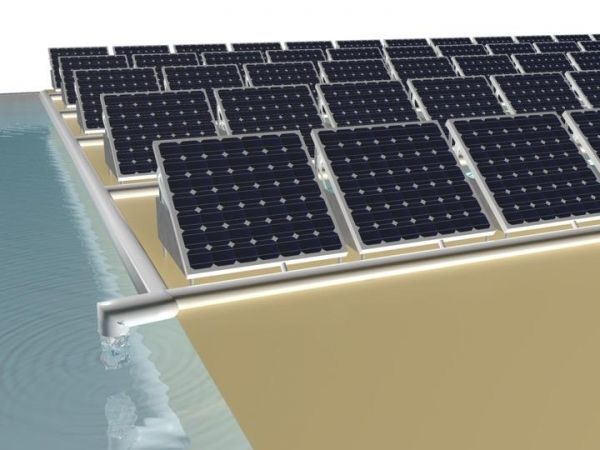A multifunctional device that captures the heat shed by photovoltaic solar panels has been developed by KAUST and used to generate clean drinking water as a way to simultaneously generate electricity and water using only renewable energy.
Water and energy production is deeply intertwined, says Wenbin Wang, a Ph.D. student in Peng Wang’s labs at the University's Water Desalination and Reuse Center. Conventional solar farms use fresh water to wash dust from the panels. Meanwhile, water desalination plants consume a lot of electricity to produce fresh water from seawater. “The water-energy nexus is one of the main issues threatening sustainable global development,” Wenbin says.
Professor Wang and his team have developed a device that could ease this problem. Commercial PV panels turn sunlight into electricity with a maximum efficiency of 20 percent. The remaining 80 percent is wasted, mainly just shed into the surrounding air as heat. The team has designed an integrated device that could capture this heat and use it to generate fresh water.
Read more at King Abdullah University of Science & Technology (KAUST)
Image: A solar farm of photovoltaic panels with a heat-driven seawater desalination system beneath each panel could co-generate renewable electricity and fresh water in arid coastal areas. (Credit: © 2019 Wenbin Wang)


